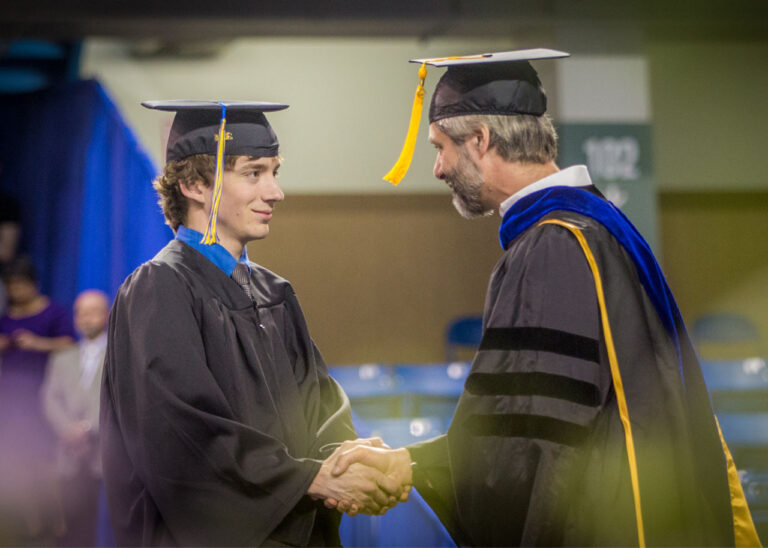Shape student achievement with early contact
There is a story about an old principal at an elementary school in Fairbanks. This principal made a point to greet each of the students entering his school each morning. Whether students arrived by bus, their parents’ car or on foot, they were called by name and often asked how they were doing and what was happening that day. The students got the idea that someone knew who they were and cared about what they were doing. This particular elementary school had fewer discipline problems and better overall student achievement.
What part of this story and practice can be applied to our level of instruction at the university and specifically to your class? Two ideas:
A personal welcome into a place of learning creates a strong connection and is part of an effective learning environment.
Giving students an opportunity to commit and reflect on their own learning goals provides focus and is a strong motivator.
The first class–or in the case of online classes–the first unit, typically contains introduction activities like reviewing the syllabus and short personal introductions. But there is an earlier opportunity to interact with your students, shortly after they register for your class.
Once registration opens you can track your course rosters with UAOnline, see who’s signed up and get their email.
View your semester class list at uaonline.alaska.edu > login > faculty services > term selection > select term > CRN selection > detail class list.
The UAOnline class list gives you information about your students’ majors, class standing, and fulfillment of any prerequisite requirements. You can also follow a link to send a note to their preferred email. While it is generally advisable to communicate with students using their alaska.edu account, first time students may not be aware of this practice. Your first email has a better chance of getting to them using their preferred listing.This is especially true weeks before the semester starts when the student is most likely not thinking about your course.
What might you say in such an email? Consider that students may be in the midst of other courses and workloads. The idea of an early communication is to welcome them versus to hijack their time. Provide them a short teaser to any special topics that you will cover. Make your message time relevant. Don’t use a message you crafted five years ago. Ask the students to think about their personal learning objectives and how they envision your course meeting their educational goals. This helps your initial conversation center on something you can be of most help with.[1]
If you already have your course online, invite the students to peruse if they wish but don’t require them to. This is also an excellent opportunity to point to your syllabus if it is available. Office hours in the current semester can certainly provide a helpful chat to students in the next semester.
Research on the subject of frequency and type of student/faculty interactions point to a correlation between a high number of contacts and student satisfaction. More importantly, high-quality interactions between faculty and students on subjects like career advice and introduction to research are influential on student aspirations and help graduation rates.[2]
References
1 Abrahamson, C. E. (2011). Methodologies for Motivating Student Learning through Personal Connections. In Forum on Public Policy Online (Vol. 2011, No. 3). Oxford Round Table. 406 West Florida Avenue, Urbana, IL 61801. p. 3.
2 Kuh, G.D., Kinzie, J., Buckley, J. A., Bridges, B. K., Hayek, J. C. (2006). What Matters to Student Success: A Review of the Literature. Commissioned Report for the National Symposium on Postsecondary Student Success: Spearheading a Dialog on Student Success. July 2006. p. 41.



